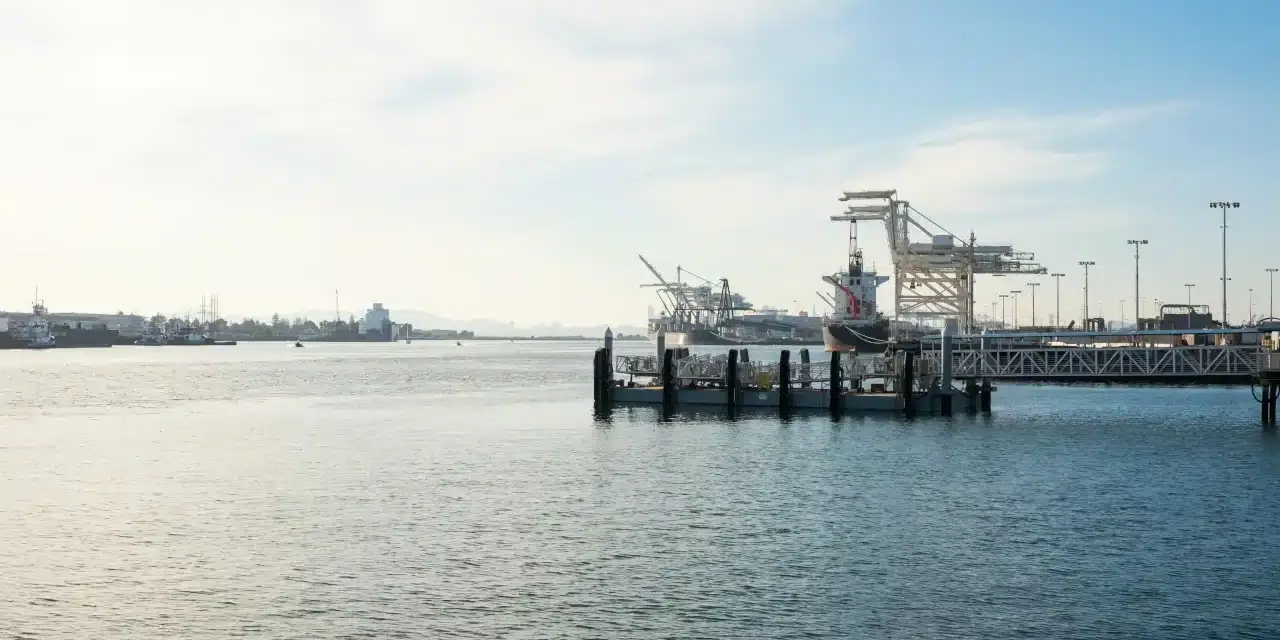Improving Gross Profit Margins & Injecting Cash
Cutting customs duty costs is an often-untapped way to improve gross profit margins and inject cash into a business. Finance teams should start by asking how much customs duty they are paying.
Ten classic methods to reduce customs duty costs are:
-
Reclassification of customs Tariff codes;
-
Use of Free Trade Agreements (FTA);
-
Deducting allowable elements from the customs value;
-
Use of customs duty reliefs;
-
Use of Autonomous Tariff Suspensions;
-
Automating customs declarations;
-
Streamlining customs administration and associated costs using digital tools;
-
Deferring the point at which customs duty is paid and reducing financial guarantees;
-
Extending the above methods through the supply chains with suppliers and customers;
-
Applying the above planning retrospectively to realise customs duty reclaims.
How Barbourne Brook can help you
We have a database of over 200 customs planning ideas to reduce customs duty costs and recover overpayments. Our bespoke review process enables us to match planning ideas against your business to find opportunities, work out how the opportunities work best together, build claims and present arguments.
Our methodology is specifically designed to minimise any risk of subsequent challenge by providing proper disclosure, applying for legal rulings (where possible) and properly completing any necessary formalities. Our consultants have a wealth of experience and expertise in this area and know the traps to avoid.
In many cases, we can work on a no-win:no-fee basis where our fees come out of cash returned to you by HMRC or when you have benefited from ongoing savings. We take the business risk and simplify your Return on Investment case.
1. Reclassification of Tariff Codes
Determining the correct customs classification (or tariff) is often complicated, and errors can lead to significant customs duty overpayments. The customs tariff has over 16,000 codes, with rates varying from 0-260%. It often has its specific definitions, which are often different to general usage or business norms, and a single word can have a dramatic effect.
Once you are confident that you have the correct code then there is sometimes the possibility of utilising tariff engineering, a common method for legitimately changing the objective characteristics of what is imported. The product could be split down for subsequent assembly in the UK or built up before submission to customs.
2. Customs Origin & Free Trade Agreements (FTA)
The EU/UK has FTA with over 120 countries that allow qualifying goods to be imported at a reduced, often free rate of duty. Businesses must be proactive to take advantage of FTA arrangements, determine whether the conditions apply, and ensure other parties provide the necessary documentation and make the necessary claims.
Several little-known elections can increase the scope of savings and make the claims process more robust. Once set up claims for the lower rates should just roll in, but put in checks to make sure nobody has dropped the ball.
3. Customs Valuation: Stripping Elements
The regulations require several items be added to the cost of goods to arrive at an acceptable customs value (e.g. freight costs to the EU and insurance). The customs rules also allow several elements to be deducted from the customs value, thus lowering the customs duty cost. For example, goods are often purchased on payment terms (e.g. 30, 60 or 90 days), meaning the importer is paying for both the goods and the provision of finance. If certain conditions are met, a deduction can be made for the finance element.
Our Customs Planning Ideas Database lists 25 potentially deductible elements.
Any additions to the customs value must also meet conditions. We have come across several instances where a company has uplifted its customs value to include costs such as royalties, R&D contribution, commissions etc., where the charging conditions were not met. Getting rid of these uplifts again lowers costs.
Note that 70% of imports are from related parties. Special rules apply to these transactions, but there are still potential deductions and savings available. These imports also provide several other cost-saving opportunities.
4. Duty Relief
There are five typical duty relief schemes commonly adopted by businesses, namely:
| Inward Processing | Relief on imports that are processed and subsequently exported |
| Outward Processing | Relief on the value of materials exported and subsequently re-imported within a new product |
| Tariff Inversion Relief | Applying the duty rate of EU manufactured goods rather the duty rate of the imported components where the latter is higher |
| End Use | Reduced or nil rates of duty when imports are used to produce certain things (e.g. car components used in industrial assembly) |
| Returned Goods Relief | Return of goods to the EU/UK that have not been processed |
In addition, there are also several lesser-known specific reliefs, some general (sample relief, low-value consignments, testing) and some industry-specific especially is aerospace, chemicals, food & drink.
All these relief schemes have options and elections that can increase their scope, ease the administrative burden, and reduce compliance risks. In our experience, these options are not well understood and are often overlooked.
5. Autonomous Tariff Suspensions
Customs duties are aimed at protecting domestic industry rather than simply raising revenue. Autonomous suspensions can be applied for to remove customs duty on imports or raw materials and components that are not sufficiently available in the EU/UK.
Businesses can apply and lobby for new tariff suspensions and, if granted, these will remove tariffs on those imports for five years or longer. Brexit is likely to generate greater potential in this area as the UK looks to identify what is made in the UK, rather than the whole of Europe.
There are many existing suspensions already in place that businesses are unaware of, and care should be taken to look at all the individual tariff lines around your imported goods.
6. Customs Declarations
A customs declaration must be completed, submitted, and accepted each time goods are imported or exported from the EU/UK. Agents typically charge businesses £35-55 per customs entry, depending on complexity and buying power.
Several software options for bringing the customs declaration function completely or partially in-house could reduce declaration charges by up to 90% or provide greater visibility and analytical information back for the same price as you are currently paying.
The number of customs declarations businesses will be making is likely to increase significantly on Brexit as movements to and from the EU are also caught.
7. Streamlined Customs Management
Customs management has two key aspects. Firstly, it is necessary to manage the process of providing the required information to make the customs declarations. This process often involves determining the core customs elements (classification, origin, valuation adjustments etc.), getting the information and necessary documentation to a third party service provider to make the declaration and chasing to get copies of those entries for your records. Well thought-through processes can streamline this process and costs, but more significant savings can be made through software solutions (see #6).
Secondly, customs compliance is subject to audit-based control. Failure to meet your obligations can result in penalties, additional duty demands, investigations, clearance delays etc. As such, most businesses spend considerable resources carrying out checks of their customs declarations against instructions. Again, streamlined procedures can generate savings here. But, there have been significant software developments in this area that should help semi-automate customs control. For example, our Customs Analytics Tool (CAT) pulls in customs data electronically from HMRC, carries out several checks to look for errors and creates exception reports.
We have seen businesses employ 2-3 people to carry out checks that could be completed more accurately using software in less than an hour, saving over £40,000 per annum.
8. Deferral of Customs
We appreciate that deferring customs duty and import VAT is more of a cash-flow benefit than cost-saving benefit. Customs Warehousing, Duty Deferment Accounts etc., delay the point at which duty is collected by at least 45 days.
Absolute cost savings can also be made here by reducing the guarantee costs that underpin these deferment solutions. For example, Postponed Import VAT Accounting (PIVA) enables businesses to account for their import VAT through their VAT return rather than pay and reclaim it. PIVA provides a significant cash flow advantage and needs no prior authorisation, with businesses needing to instruct their customs brokers to claim this on their customs declarations.
“Barbourne Brook provided us with an excellent introduction to Post Brexit Customs Practices. They tailored the short course to meet our needs and it covered everything we needed to know about importing/exporting from 1.1.21.
From initial contact to delivery and after course assistance, they exceeded our expectations at every level – I would have no hesitation recommending them to others in a similar situation to ourselves.”
Claire Matthews, Financial Controller, Kemper System Ltd
9. Working the Supply Chain
The potential benefits from the previously mentioned planning ideas can often be grown exponentially by working with your suppliers and customers. For example, if your domestic customer sells to export markets, you could work together to extend the benefits of IPR by transferring goods to them duty-free. Neither party would qualify for this relief in isolation but working together, you strip cost out of the supply chain.
Working with Suppliers: You could be the party exporting in the above example. Another example, you may manufacture items that would attract 0% duty if you imported them into the EU/UK. However, domestic suppliers may be importing materials or components into the UK that attract duty and include these costs in sales to you. Working together, you could strip out these costs using the inverted tariff relief (see #4).
10. Reclaims
Many of the planning ideas above can be applied retrospectively, up to three years. Retrospection can inject cash back into the business.
Any reclaim will require you to prove your case, build the necessary supporting data file and complete the appropriate forms. Specific agreement on the above methods is a critical step in agreeing any reclaim with the customs authorities.
How Barbourne Brook can help you cut your customs duty costs
Performing full customs audits
giving clarity on the wider strategy, allowing you to address issues before they become serious and reduce costs and recover over payments
Building best practice
for ongoing management through a clear audit trail, Standard Operating Procedures (SOPs) to manage the establishment and maintenance of master customs data and the process of making customs declarations
Providing ongoing Management Support
including customs data analytics, updates on customs developments, regular meetings and ad-hoc support to future proof customs compliance
Related Posts
15 July 2024
Customs Traps: The High Price of a Blinkered Approach to Transfer Pricing
Businesses selling direct to customers…
10 June 2024
New Scheme Offers Declaration-Free Exporting To Northern Ireland For B2C Businesses
Businesses selling direct to customers…


